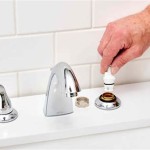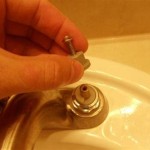How Far Can You Run a Bathroom Exhaust Fan Ductless Air Conditioner?
The intersection of bathroom exhaust fan technology and ductless air conditioning presents a unique and often misunderstood application. While it might seem logical to combine these systems to efficiently manage both humidity and temperature in a bathroom environment, the realities of airflow dynamics, system design, and code compliance dictate that running a bathroom exhaust fan ductless air conditioner is generally not a viable or recommended practice. This article will delve into the reasons why, exploring the fundamental differences in operation, potential problems, and more appropriate solutions for achieving optimal bathroom climate control.
The primary function of a bathroom exhaust fan is to remove moisture and odors from the air. These fans are designed to create negative pressure within the bathroom, drawing in relatively humid air and expelling it to the exterior of the building. This process helps to prevent the growth of mold and mildew, protects building materials from moisture damage, and improves overall air quality. Exhaust fans are typically connected to ductwork that terminates at an exterior vent, ensuring that the expelled air does not re-enter the building.
Ductless air conditioners, also known as mini-split systems, operate on a completely different principle. These systems use a refrigerant cycle to transfer heat from one location to another. An indoor unit, typically mounted on a wall, absorbs heat from the room air and cools it. The cooled air is then circulated back into the room. The heat absorbed by the indoor unit is transferred to an outdoor unit, which releases the heat into the surrounding environment. Ductless air conditioners are designed to operate in a closed-loop system, with the refrigerant constantly circulating between the indoor and outdoor units.
Attempting to integrate a bathroom exhaust fan into a ductless air conditioner system presents several significant challenges. The exhaust fan is designed to expel air, while the air conditioner is designed to circulate air within a closed system. Combining these functions would disrupt the intended operation of both systems and could lead to a variety of problems.
Disruption of Airflow and System Efficiency
The most significant reason against running a bathroom exhaust fan ductless air conditioner relates to the fundamental principles of airflow. Ductless air conditioners rely on a closed-loop system to efficiently transfer heat. Air is drawn into the indoor unit, cooled, and then returned to the room. Introducing an exhaust fan into this equation disrupts the airflow pattern and compromises the system's efficiency.
An exhaust fan creates negative pressure, constantly drawing air out of the bathroom. If the ductless air conditioner is operating simultaneously, it would be forced to work harder to maintain the desired temperature. The system would have to compensate for the air being exhausted, leading to increased energy consumption and reduced cooling capacity. The air conditioner might also struggle to maintain a consistent temperature, resulting in uneven cooling throughout the room.
Furthermore, integrating the exhaust fan with the air conditioner could introduce outside air directly into the system. Ductless air conditioners are designed to cool and circulate indoor air. Introducing unfiltered outside air can contaminate the system, reduce its efficiency, and potentially introduce pollutants into the bathroom. This can lead to increased maintenance costs and a shortened lifespan for the air conditioning unit.
The increased workload on the ductless air conditioner can also lead to premature wear and tear on its components. The compressor, the heart of the air conditioning system, would be forced to work harder to compensate for the constant loss of air. This can lead to overheating, mechanical failure, and a significantly reduced lifespan for the unit. The overall efficiency of the system would be compromised, resulting in higher energy bills and increased maintenance costs.
Additionally, ductless air conditioners are designed to dehumidify the air as part of the cooling process. By constantly exhausting air from the bathroom, the exhaust fan would counteract this dehumidification effect. This would create a situation where the air conditioner is constantly working to remove moisture, only to have more moisture introduced into the room by the exhaust fan. This futile cycle would further reduce the system's efficiency and increase energy consumption.
Potential for Condensation and Mold Growth
Another critical concern associated with running a bathroom exhaust fan ductless air conditioner is the potential for condensation and mold growth within the system's ductwork or components. When warm, humid air comes into contact with a cold surface, condensation occurs. This condensation can create a breeding ground for mold and mildew, leading to a variety of health problems and potential damage to the building structure.
If the exhaust fan is connected to the ductless air conditioner system, the warm, humid air from the bathroom would be drawn into the cool ductwork. This would create a perfect environment for condensation to form, especially during periods of high humidity. Over time, this condensation can lead to the growth of mold and mildew, which can release spores into the air and cause respiratory problems, allergies, and other health issues.
The mold and mildew growth can also damage the components of the ductless air conditioner. The moisture can corrode metal parts, damage electrical wiring, and reduce the overall efficiency of the system. This can lead to costly repairs and a shortened lifespan for the unit. In severe cases, the mold growth can become so extensive that the entire system needs to be replaced.
Furthermore, the presence of mold and mildew can create unpleasant odors in the bathroom and throughout the building. These odors can be difficult to eliminate and can negatively impact the overall indoor air quality. Addressing the mold problem can be a costly and time-consuming process, often requiring professional remediation services.
The design of ductless air conditioners is not intended to handle the constant influx of moisture-laden air that a bathroom exhaust fan would introduce. The system's internal components are not typically designed to resist the corrosive effects of prolonged exposure to moisture. Therefore, attempting to combine these systems significantly increases the risk of condensation, mold growth, and associated health and structural problems.
Code Compliance and System Design
Building codes and regulations typically dictate the requirements for bathroom ventilation and air conditioning systems. Running a bathroom exhaust fan ductless air conditioner often violates these codes, as it compromises the intended functionality of both systems. Bathroom exhaust fans are specifically required to vent to the exterior of the building to effectively remove moisture and odors. Connecting the exhaust fan to a ductless air conditioner system would prevent it from fulfilling this primary function.
Most building codes require that exhaust air be discharged directly to the outside and not recirculated within the building. Integrating the exhaust fan with a ductless air conditioner would effectively recirculate the exhaust air, violating this code requirement. This can result in fines, penalties, and the need to modify the system to comply with applicable regulations.
Furthermore, the design of ductless air conditioners is not intended to accommodate the airflow characteristics of an exhaust fan. The system's ductwork and components are specifically designed to handle the circulation of air within a closed loop. Introducing an exhaust fan into this equation can disrupt the airflow patterns, reduce the system's efficiency, and potentially damage its components.
The installation instructions for both bathroom exhaust fans and ductless air conditioners typically specify that these systems should not be interconnected. The manufacturers of these products recognize the potential problems associated with combining these systems and explicitly advise against it. Ignoring these recommendations can void the warranties on both the exhaust fan and the air conditioner.
Given the potential for code violations, system inefficiencies, and potential damage to equipment, it is generally not advisable or permissible to run a bathroom exhaust fan ductless air conditioner. Separate and properly designed systems for ventilation and air conditioning are the best approach to ensure optimal comfort, air quality, and code compliance in the bathroom environment.

How To Vent A Bathroom With No Outside Access

Using A Bath Fan To Equalize Room Temperatures Greenbuildingadvisor

Ductless Mini Split Air Conditioner Guide 2024 Sylvane

How To Vent A Portable Air Conditioner Without Window American Home Water

How To Vent A Portable Air Conditioner Sylvane

5 Things To Consider When A Bathroom Fan 2024 Sylvane

The Best Ductless Mini Split Air Conditioner Reviews By Wirecutter

Can You Oversize A Mini Split Heat Pump Energy Vanguard

Why You Should Upgrade Your Bathroom Fan Sylvane
Can I Vent Multiple Bathroom Fans To The Same Hole Using Flexible Duct And Connectors Or Will They Blow Air Into Each Other Instead Of Venting Outside Quora
Related Posts







